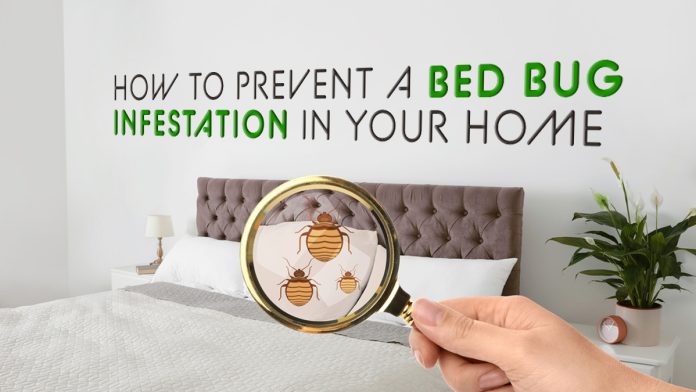You’ve all aware of bed bugs, which are a massive problem in your houses, so you’ve created a cure. Heat treatment is the most effective approach for treating bed insect infestations of all sizes today. Temperature increases are employed in specialist equipment for this operation. The removal or killing of insects is quick, extensive, and, most essential, enduring.
This means that a few things must be done for the treatments to be successful. Here’s how to prevent a bed bug infestation in your house.
Lower the number of areas where a bed bug may hide.
- Always keep your surroundings clutter-free.
- Sweep often, especially beneath and behind beds, in attics, garages, and kitchens.
- Tighten faulty electrical faceplates and fix or eliminate damaged wallpaper.
- Seal cracks and crevices in timber bed frames, baseboards, walls, ceilings, windows, door frames, and furniture.
- Examine any entrance points on walls you share with neighbors and any apertures that provide access to the inside of the structure, like areas where utility services pass through.
Be cautious about what you bring into your home or purchase.
- Check every material you take into your home, including used magazines, new equipment, and furniture at a thrift store or vintage store.
- Be extremely cautious when purchasing used or reconditioned products.
- New bedding is frequently delivered in the same pickup that removes old bedding, so inspect your new bed before it arrives at your property. Make it a point to protect your new mattress before it is delivered.
- Never pick up a bed or sofa from the street.
- Check goods before putting them in your car, and double-check your vehicle after assisting a buddy with a transfer.
Examine your property for bedbugs daily.
Examine the areas around, beneath, and alongside beds, sofas, and furniture. Inspect the area for dark spots (dried fluid or excrement), white patches (eggs – tough to notice), and living or dead bed bugs.
If you detect evidence of bedbugs, gently expand the scope of your investigation. Check locations where your companion rests if you have one. You can also call the best Bed bug exterminators in Fort Worth, TX to help you guide pest investigation and remove pests right away.
Examining the bed for a bed bug
- All bedroom linens, including blankets, should be removed and inspected. If you find evidence of bedbugs, wash your bedding on the hot cycle of your washing machine.
- Slowly raise each edge of the mattress and inspect all folds, lumps, buckles, and any pipeline material sewn onto the borders, mattress grips, air openings, and beneath pillow tops.
- Lift each side carefully and inspect where the mattress spring lies on the bunk bed.
- Examine the upper layer of the bed frame, within sheet folds, along seams, and where the fabric is attached to the bed frame. Check the back of the material as well. If you notice bedbugs, turn the box spring up and down and eliminate the material underneath to inspect the box spring.
- On the bedroom, legs, and top inspect all areas, holes, bolts, screws, pins, and beneath plywood plugs that hide screw or nail holes.
- If you detect bed bugs within the box spring or cracks or worn places in the material of the mattress, you should dump them out. These areas can encourage bedbugs to deposit eggs in the regions that are difficult to cure.
Pack your bed or any other contaminated things in cellophane and seal off the sides to avoid spreading bed bugs on your route to the garbage.
Bed Bug inspection of furniture
- Check the grooves around the buttons of chairs and sofas, especially the joints, and remove any broken mattresses. Examine the seating area and any wrinkles on the front and back of the seat or sofa. Examine the legs, mainly where they connect to the cushion and the cloth attached to the body.
- Rub all corners and edges of furniture pieces, such as dressers, cabinets, tables, chairs, and bookshelves. Move the cabinets and inspect the inside and front, sidewalls, backrest, and legs, giving special attention to any gaps. Check for holes between shelves and furniture frames and under steel drawer pulls with detachable.
- Garden furniture is an excellent hiding place for bedbugs, so inspect it thoroughly.
If you notice evidence of bed bugs, make the following checks:
- Check within openings in the wall corners nearest to the bed using the gap tool.
- Between folds of the curtains, along and inside curtains, and beneath wall fixtures.
- Under decors and around floor borders. Check the carpet pin lines and fold back the corners of the rugs.
Bed Bugs may lurk in wall art, light chandeliers, smoke alarms, or other ceiling goods if they are on the walls. Bedbugs lurking in led lighting might indicate that they are infiltrating your home from a room overhead.



